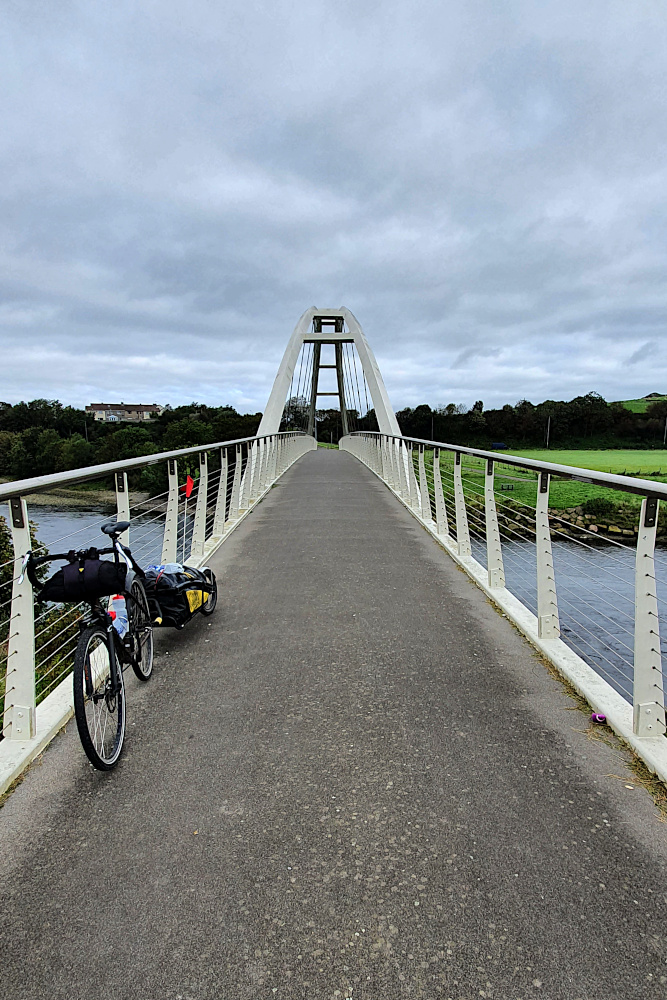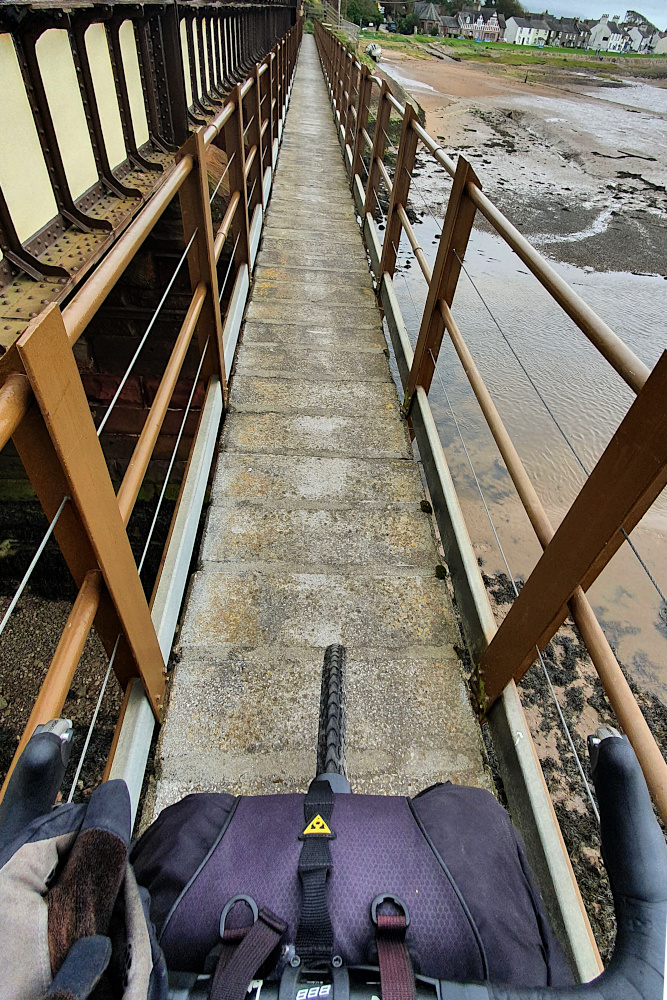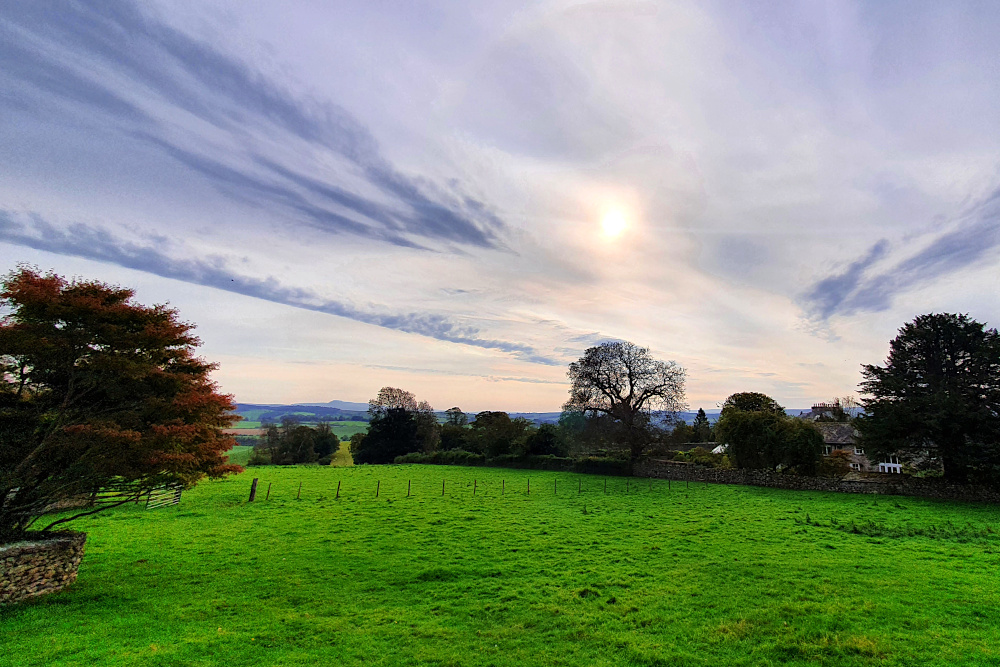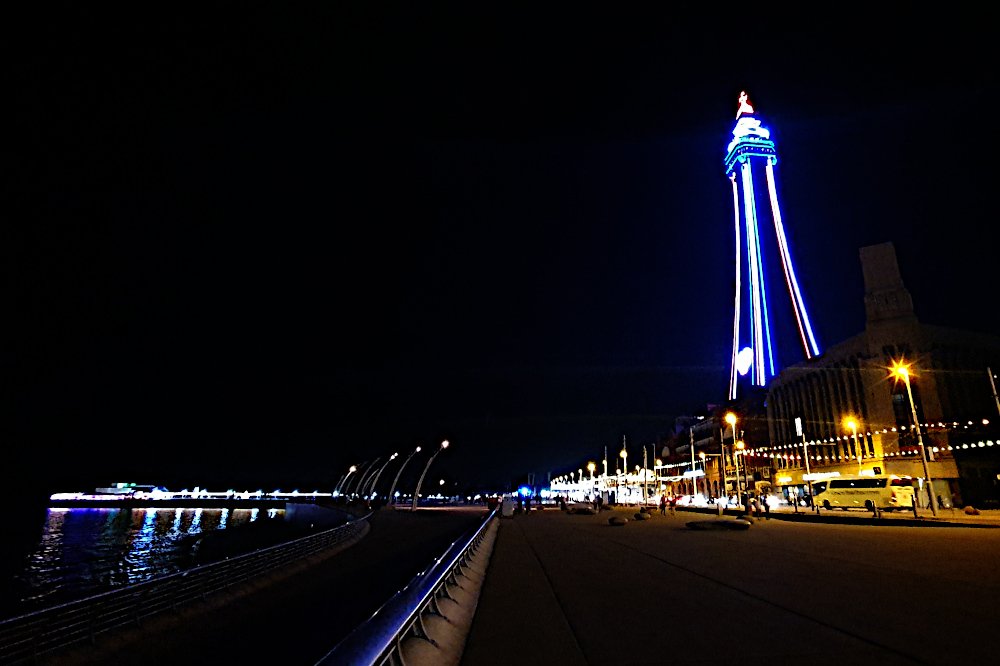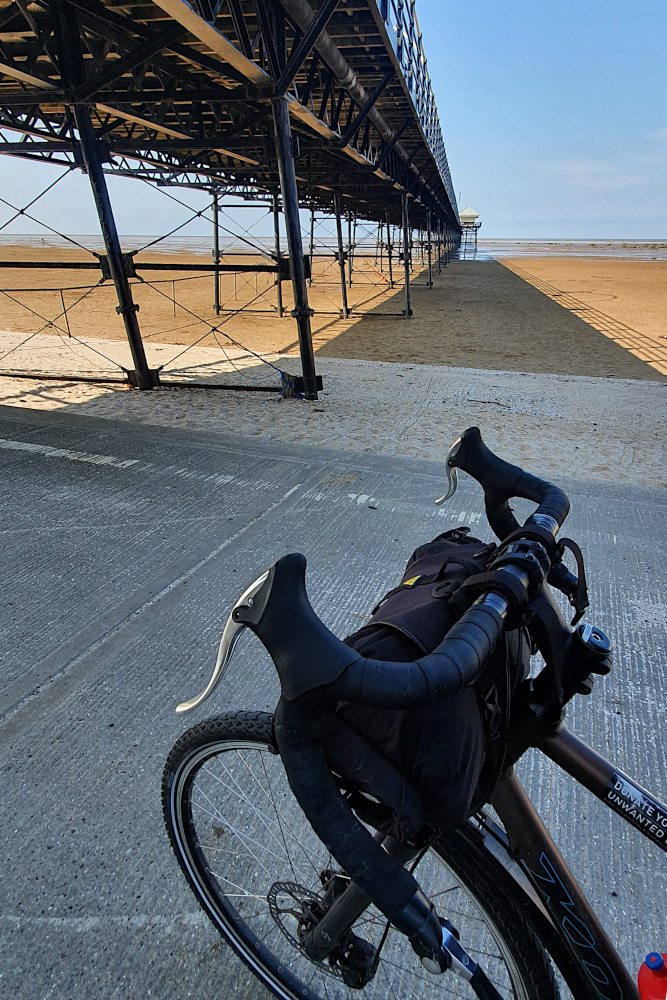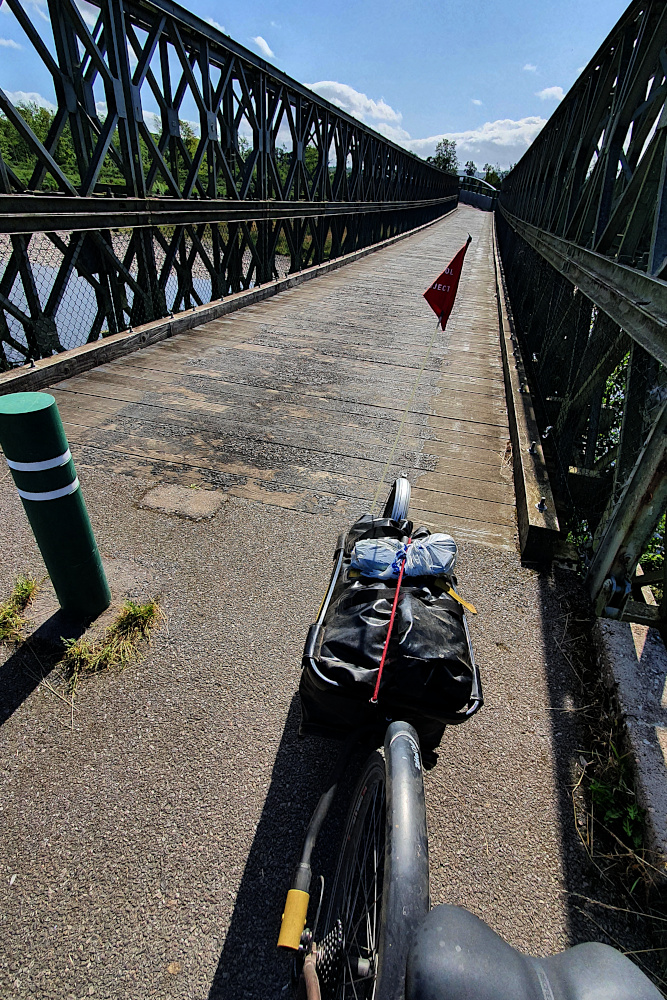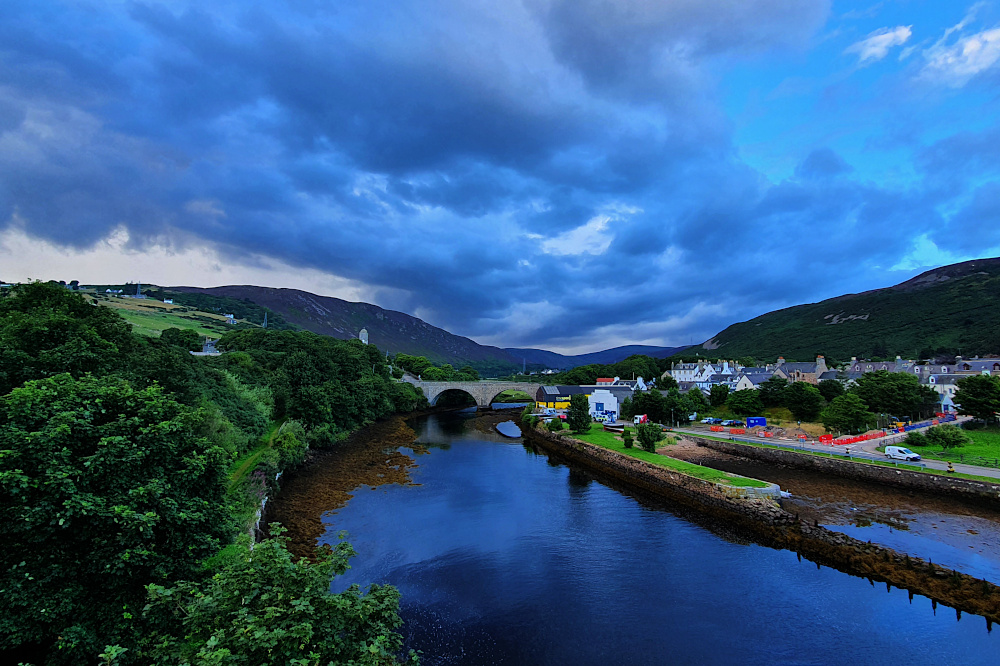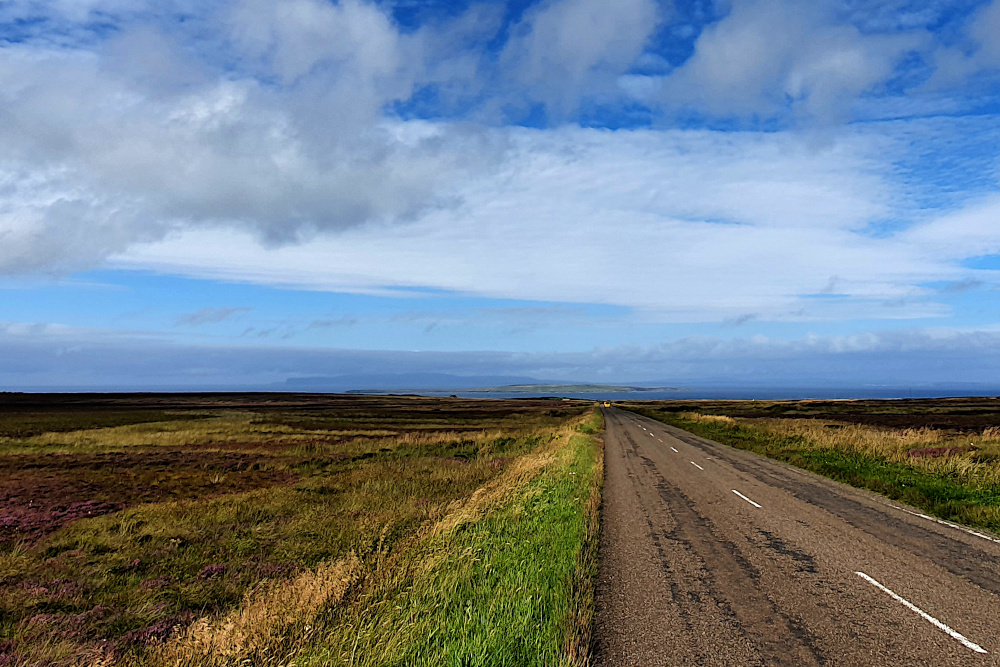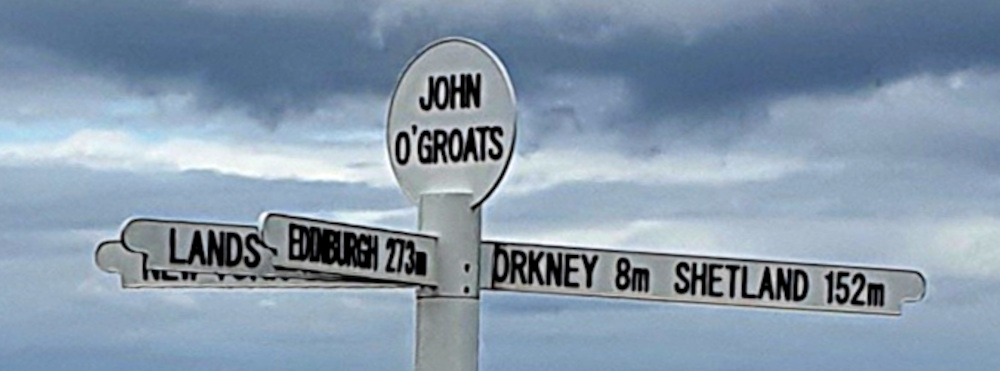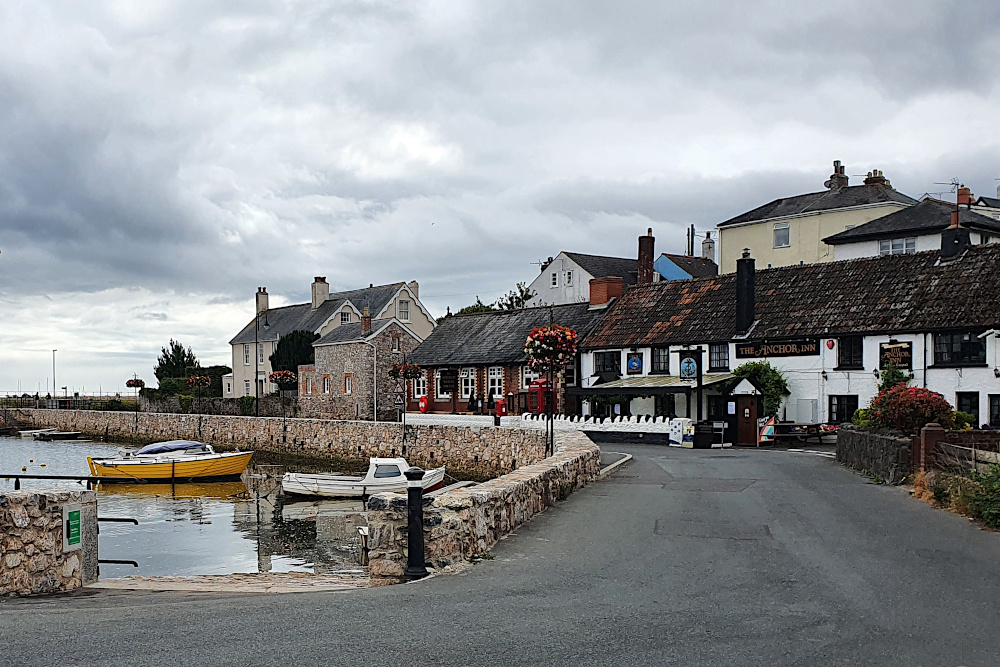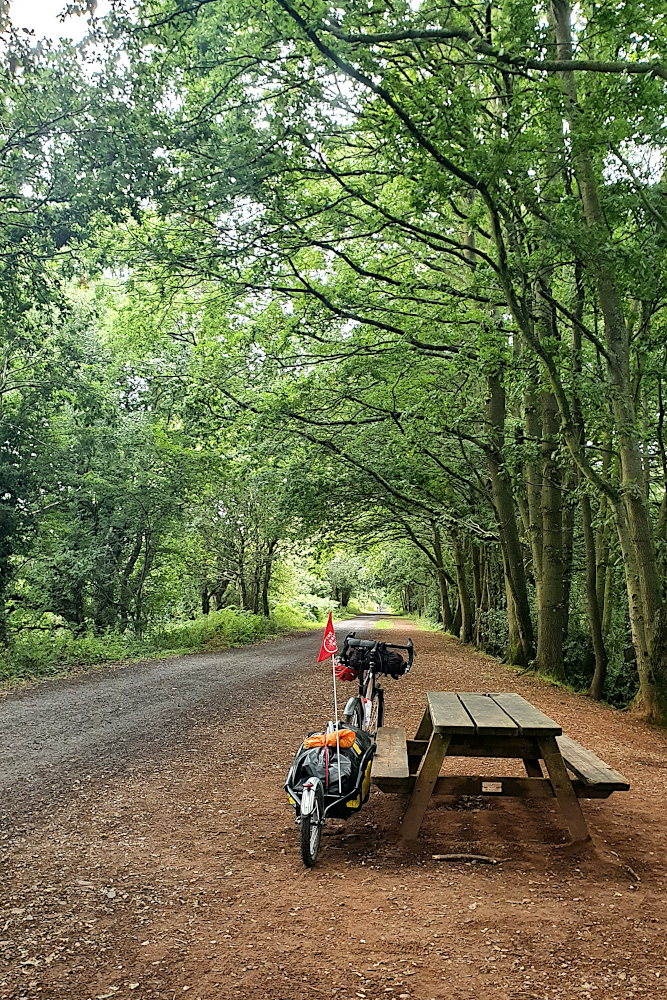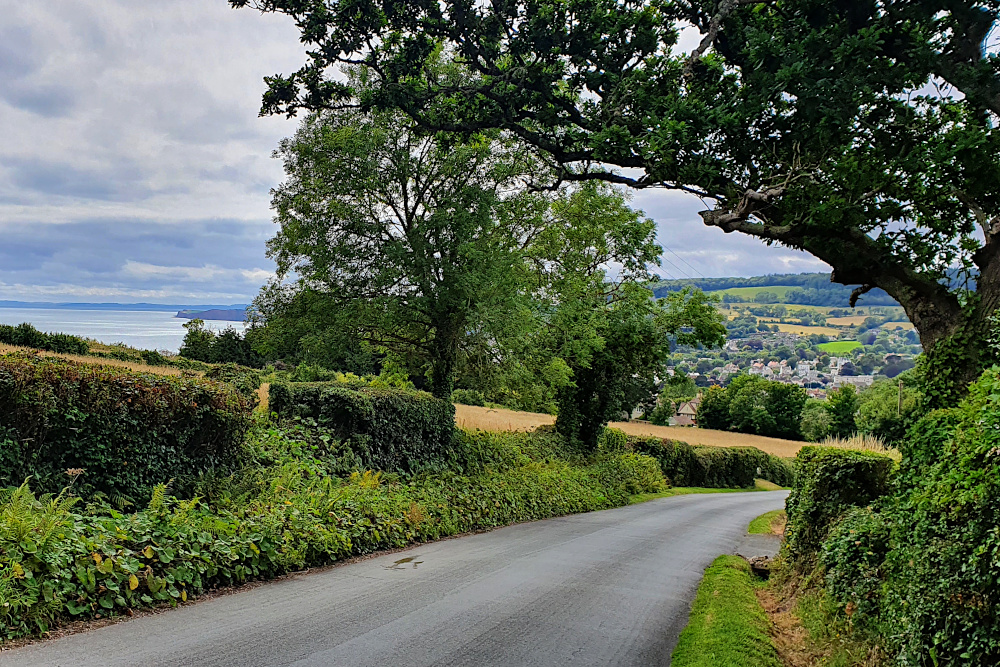As you may have gathered from the previous post, Covid-19 (or rather, the various UK authorities’ reaction to it) is finally having a major impact on my route and plans.
It’s left it very late in the day, thankfully. And it seems to have left just enough of a gap for me to squeeze over the finish line before the gates slam shut.

Just a few minutes after I last posted here on Wednesday morning, I was already firming up plans to re-route to avoid the local lockdowns in South Wales. I was also being soaked by a continual band of heavy showers, and getting somewhat upset with the weather forecast, which had promised me a nice sunny, if breezy, day.

The rain eventually cleared in the afternoon, and I continued south with a tailwind before hitting the huge inlet of Milford Haven (though I was well inland of the town of the same name). As well as being a base for local yachties, Milford Haven also contains a colossal gas terminal further towards the sea, keeping the UK’s fossil fuel addiction burning.
Although increasingly unbelievable, the forecast for Thursday was awful, so I decided to risk one final rest day to plan how to finish up without getting trapped.
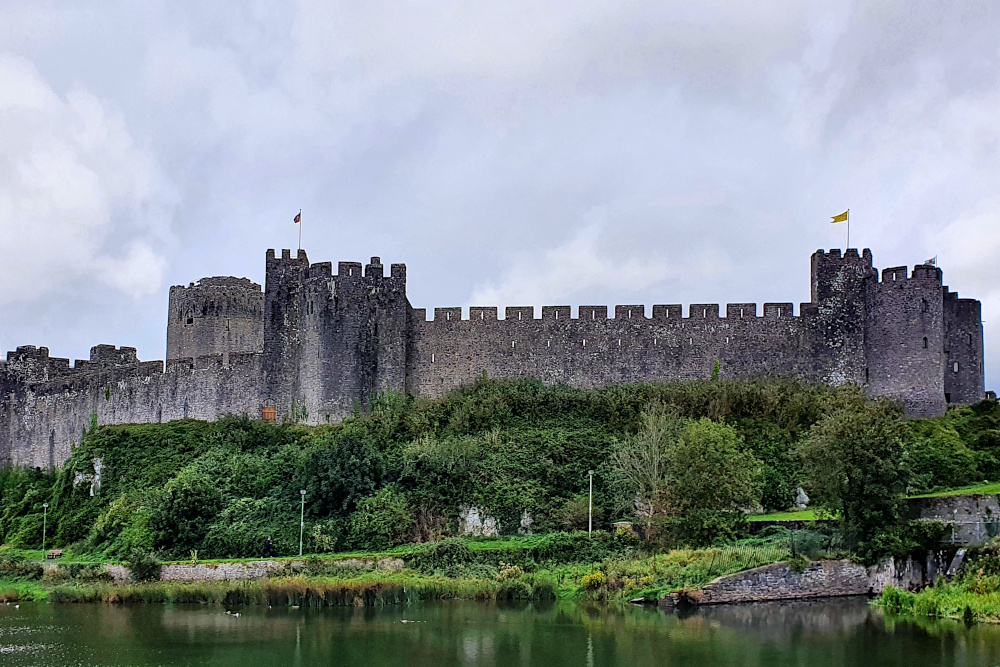
Pembroke is not a bad place to be stuck on a rainy day, with possibly my favourite castle of the whole trip (though there’s stiff competition) parked in the centre, and another old and wiggly town built around it. There’s a lot of history there, too, as there’s been a castle in Pembroke since the 11th century, and it’s the birthplace of King Henry VII.
Meanwhile, out in Covid land, there were more rumblings from the Welsh government about adding even more areas to the local lockdowns, including Cardiff and Swansea, Wales’ two biggest cities. This would wipe out any small chance that I could zip through the Covid zones on each side of Cardiff.
I had to give up on following the coast, commit to the hilly inland route via Brecon, and get planning.
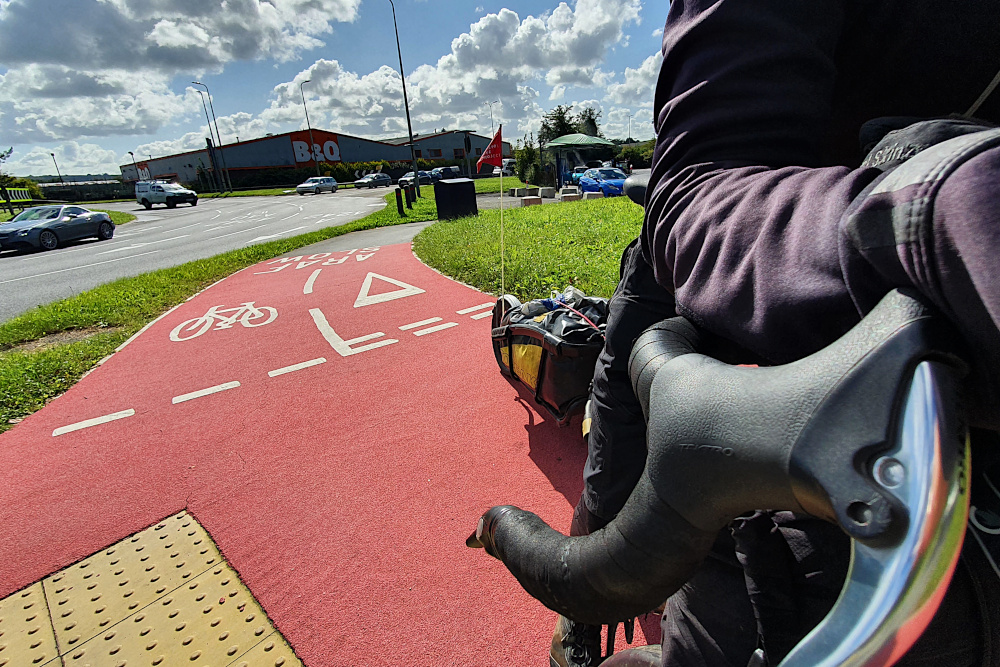
The Covid ‘second wave’ in Wales is actually not as bad as it is in England, but the Welsh government seems to tend towards stricter lockdown measures. During Lockdown 1, back in the springtime, they had a five-mile travel limit. I don’t want to risk getting stuck with that sort of thing, so am aiming at the quickest possible route back, without touching the exclusion zones in the south.
After a wetter than expected day, and a fully wet day, I was fully expecting yesterday (Friday) to defy the weather forecast and be wet too. In fact, it turned out OK, with just the odd (very heavy) shower scudding through the area on a strong northerly wind. I headed slightly north of east through the sunshine towards Carmarthen (above and below).

As well as the Welsh road surfaces being by far the most consistently decent in the UK, they’re also making some decent strides on the bike infrastructure side of things. Some rubbish signposting aside, Carmarthen boasted both some extremely bright (and therefore easy to follow) bike paths, and a fairly spectacular cycling / pedestrian bridge.

Carmarthen is also the gateway to the pretty Towy valley, which provided a gentle route towards the big hills of the Brecon Beacons. Even as I was heading up the valley yesterday, the expected Swansea and Cardiff lockdowns were announced, so it looks like I made the right call on the route.
Today, it’s a big hill pretty much straight out of the gate, up onto the Brecons. Fingers crossed, that’ll take me to the start of an exceptionally long (by British standards) downhill run across the top of the Brecon Beacons National Park, avoiding the Welsh Covid zone.

And one more day should take me home, and the end of the trip. Suddenly that’s tomorrow, which seems slightly insane. It remains to be seen whether things will actually be that simple.
And the Pembrokeshire Dangler? Nothing rude, and not a peculiar local delicacy. Nor even a medical condition or the local serial killer. No. It’s a line of rain showers which occur when there’s a northerly wind picking moisture up off the Irish Sea. Beautiful weather on either side, and a constantly miserable time for anyone stuck underneath.
Sounds very familiar. But I’m not in Pembrokeshire any more…
